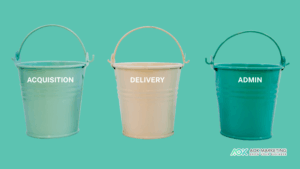URL structure play a crucial role in determining a website’s visibility and ranking. These often-overlooked aspects of web development can significantly impact how search engines crawl, index, and understand your site’s content. This article delves into the importance of creating SEO-friendly URLs, handling duplicate content with canonical tags, and effectively managing URL parameters.

A. Creating SEO-friendly URLs
SEO-friendly URLs are not just beneficial for search engines; they also enhance user experience and can contribute to higher click-through rates from search engine results pages (SERPs). Here are key considerations for creating optimal URL structures:
Keep it short and descriptive: Shorter URLs are easier for users to remember and share. They should succinctly describe the page’s content. For example: Good: www.example.com/blue-widgets Bad: www.example.com/products/category/subcategory/item?id=123456
Use keywords wisely: Include relevant keywords in your URLs, but avoid keyword stuffing. The URL should naturally reflect the page’s content. Good: www.example.com/best-chocolate-chip-cookies-recipe Bad: www.example.com/cookies-chocolate-chip-best-recipe-homemade-easy
Use hyphens to separate words: Hyphens are the standard for word separation in URLs. Avoid underscores, spaces, or other characters. Good: www.example.com/seo-best-practices Bad: www.example.com/seo_best_practices or www.example.com/seo%20best%20practices
Stick to lowercase letters: Using lowercase letters in URLs helps avoid confusion and potential duplicate content issues that can arise from case sensitivity. Good: www.example.com/about-us Bad: www.example.com/About-Us
Avoid unnecessary words: Remove articles (a, an, the) and other superfluous words from URLs when possible. Good: www.example.com/increase-website-traffic Bad: www.example.com/how-to-increase-the-traffic-to-your-website
Use static URLs: When possible, opt for static URLs instead of dynamic URLs with multiple parameters. Good: www.example.com/products/red-shoes Bad: www.example.com/products.php?category=shoes&color=red&size=9
Implementing these practices will not only make your URLs more appealing to search engines but also more user-friendly and shareable.
B. Handling duplicate content with canonical tags
Duplicate content can be a significant issue for SEO, potentially diluting the ranking power of your pages and confusing search engines about which version of a page to index and display in search results. Canonical tags are a powerful tool for addressing this problem.
Understanding canonical tags: A canonical tag is an HTML element that tells search engines which version of a page should be considered the “master” or preferred version. It looks like this: <link rel=”canonical” href=”https://www.example.com/preferred-page” />
When to use canonical tags:
-For similar product pages with slight variations (e.g., different colors or sizes)
-Printer-friendly versions of pages
-Paginated content
-Content accessible through multiple URLs (e.g., with and without www)
Self-referential canonicals: It’s a best practice to include self-referential canonical tags on all pages, even if there’s no duplicate content. This helps prevent future issues if the content is replicated elsewhere.
Cross-domain canonicalization: Canonical tags can also be used across different domains if you have content syndicated on other websites.
Implementing canonical tags:
-Place the canonical tag in the <head> section of your HTML
-Ensure the href attribute contains the full, absolute URL
-Use consistent protocols (http vs. https) and domain versions (www vs. non-www)
Combining with other methods: While canonical tags are powerful, they work best when combined with other duplicate content prevention methods like 301 redirects and consistent internal linking.
By properly implementing canonical tags, you can guide search engines to your preferred content versions, consolidate link equity, and improve your overall SEO performance.
C. Managing URL parameters
URL parameters, also known as query strings, can create challenges for SEO if not managed correctly. They can lead to duplicate content issues and make it difficult for search engines to understand the relationship between pages.
Identifying problematic parameters: Not all URL parameters are problematic. Focus on those that:
-Create duplicate content (e.g., sorting or filtering options)
-Don’t change the core content of the page
-Generate a large number of URL variations
Using Google Search Console: Google Search Console provides a URL Parameters tool that allows you to tell Google how to handle specific parameters on your site.
Implementing parameter handling:
-For non-essential parameters, use the “noindex” tag or robots.txt to prevent indexing
-Use canonical tags to point to the preferred version of a page
-Implement faceted navigation carefully, considering which combinations should be indexed
Rewriting URLs: When possible, rewrite dynamic URLs with parameters into static, user-friendly URLs. Instead of: www.example.com/products?category=shoes&color=red Use: www.example.com/products/shoes/red
Consistent internal linking: Ensure your internal links use a consistent URL structure, preferably without unnecessary parameters.
Monitoring crawl budget: Excessive URL parameters can waste your crawl budget. Regularly audit your site to ensure search engines are focusing on your most important pages.
Using rel=”prev” and rel=”next”: For paginated content, implement rel=”prev” and rel=”next” tags to help search engines understand the relationship between pages in a series.
By effectively managing URL parameters, you can improve your site’s crawlability, reduce duplicate content issues, and enhance overall SEO performance.
Conclusion:
URL structure and canonicalization are fundamental aspects of technical SEO that can significantly impact your website’s search engine performance. By creating SEO-friendly URLs, properly handling duplicate content with canonical tags, and effectively managing URL parameters, you lay a strong foundation for your site’s SEO efforts. Remember that these practices should be part of a comprehensive SEO strategy, working in tandem with quality content creation, robust link building, and ongoing optimization efforts. With attention to these technical details, you can improve your site’s visibility, user experience, and ultimately, its ranking in search engine results pages.
About The Author
Marketing Team
The AOK Marketing Team is a diverse group of amazing individuals driven to help all of our clients succeed. Great people are everywhere, and we believe that people should control their workday, their work environment, and where they live. We have team members in 9 countries: United States, Canada, Egypt, Belgium, Ireland, Australia, India, Pakistan, and Hong Kong.
How can we help you?





